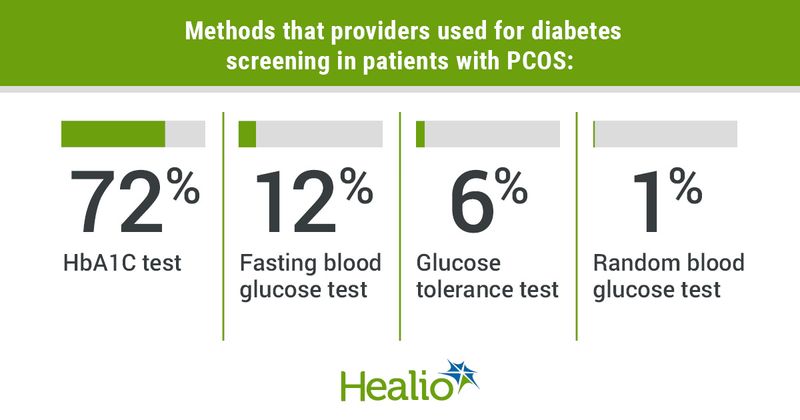Most providers ignore diabetes testing guidelines in patients with polycystic ovary syndrome
Most primary care providers who were surveyed said they use an HbA1C test to screen patients with polycystic ovary syndrome for diabetes, a practice which runs contrary to several society guidelines, according to researchers.
As many as 20% of reproductive-age women are affected by PCOS, and therefore at risk for developing insulin resistance, Samantha B. Kaiser, MD, a medical resident at the University of Hawaii, and colleagues reported.


“As a resident, I noticed that I focused my own learning about PCOS on the challenges of diagnosis and the different management for patients who do and don’t desire fertility. I paid much less attention to the cardiometabolic risks that could actually be life-limiting for these patients,” Kaiser told Healio. “When I started digging into the appropriate screening further, I realized I had definitely not heard of most people doing glucose tolerance tests for PCOS.”
Kaiser and colleagues reviewed survey responses from 116 primary care providers in Hawaii to determine how they screened for cardiometabolic abnormalities among women with PCOS. Among the respondents, 97% were physicians, 52% worked in obstetrics and gynecology, 35% worked in family medicine, 8% worked in pediatrics and 5% worked in internal medicine.
The findings, presented at the American Society for Reproductive Medicine Scientific Congress & Expo, showed that 72% of respondents used the HbA1C test to screen for diabetes. Only 6% of respondents said they used the glucose tolerance tests recommended by the American College of Obstetricians and Gynecologists and American Society for Reproductive Medicine, Kaiser said. Some of the other screening methods the respondents said they used included the fasting blood glucose test (12%) and the random blood glucose test (1%).
Kaiser attributed the gap in guideline adherence to “convenience” and “nuances.”
“HbA1C can be run on a single, non-fasting blood draw. The glucose tolerance test requires 8 hours of fasting and 2 hours of sitting around in a lab between two different blood draws,” she said.
“A nuance that can be challenging to tease out is the difference between screening for insulin resistance and outright diabetes,” she continued. “HbA1C is an appropriate screening test for diabetes, but many PCOS patients are in the prediabetic, insulin-resistant stages. Oral testing is thought to be better to detect insulin resistance in PCOS patients because of the specific differences of PCOS physiology.”
Many providers have been taught “that oral testing is more appropriate to detect those patients, which is important because lifestyle changes might be effective to prevent the conversion to diabetes before it happens,” Kaiser continued. “But when providers are using HbA1C to screen for diabetes already, that nuance might be lost or seem less important.”
She said the findings, in tandem with other society-recommended tests that are “deemed too inconvenient to be realistically performed,” warrant further discussion.
“If providers don’t feel they match real-world practice, what is the point?” she asked. “Should we adapt recommendations to accommodate things like convenience, or the willingness of the patient to complete a time-consuming test? I don’t think we’re at a point where we can convincingly say HbA1C is sufficient, but it’s what most people are using, so I think these questions need to be addressed.”

